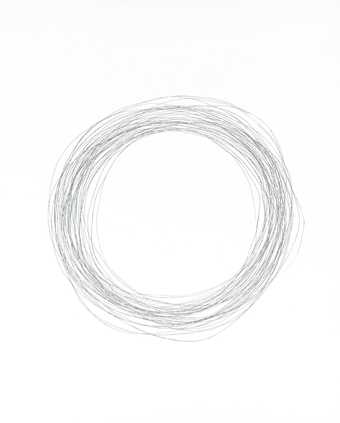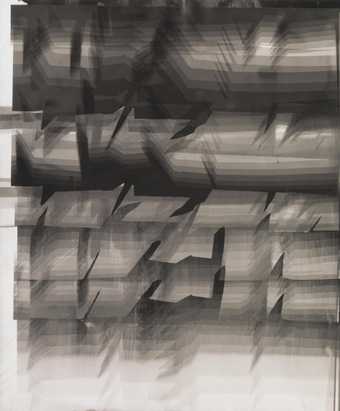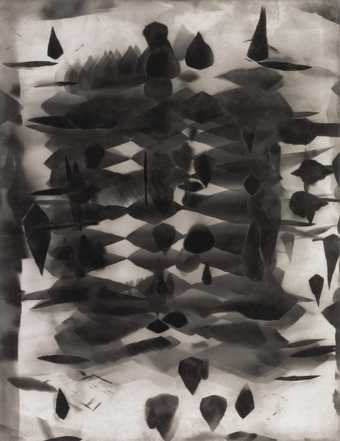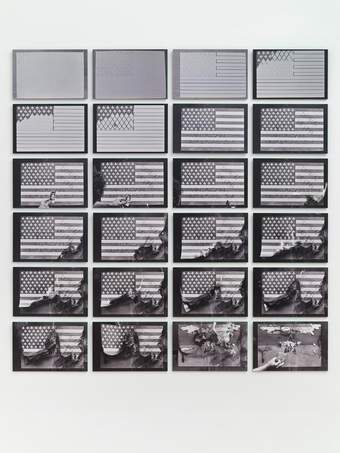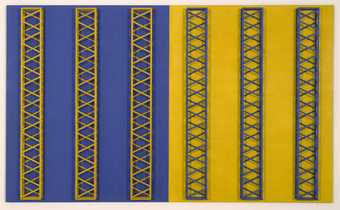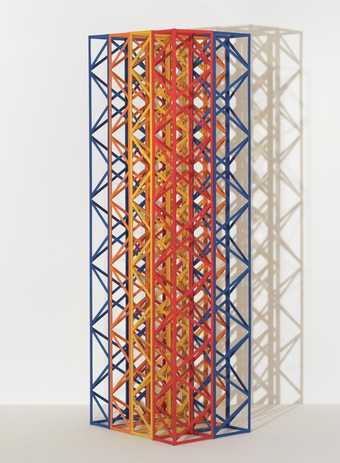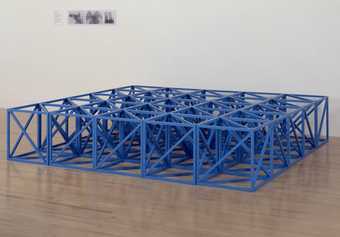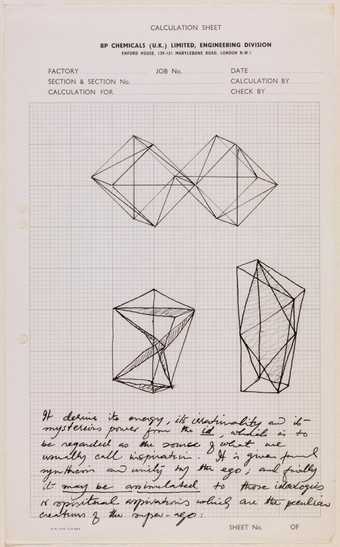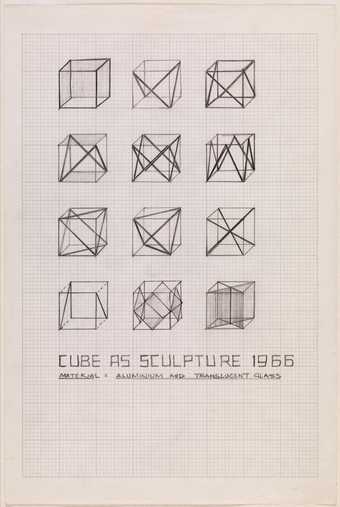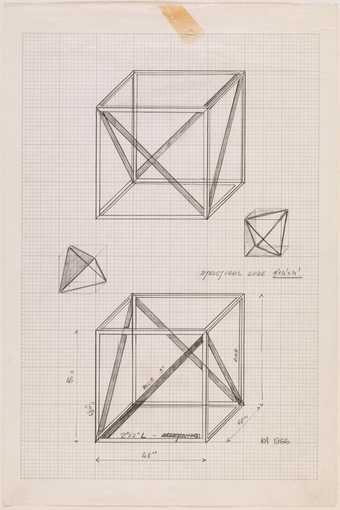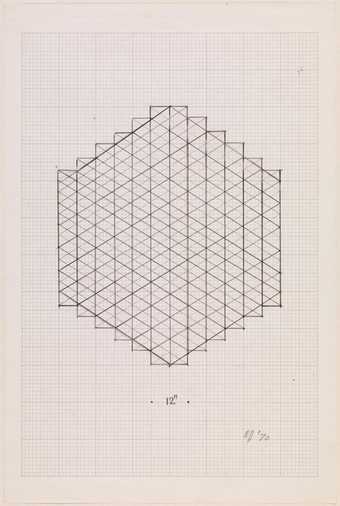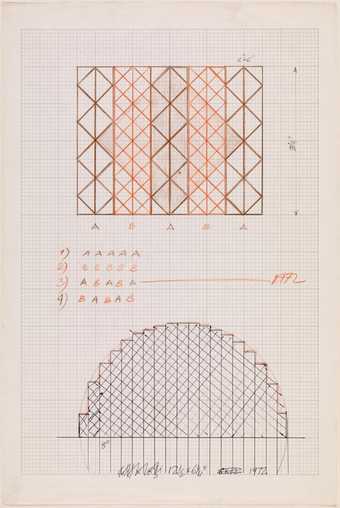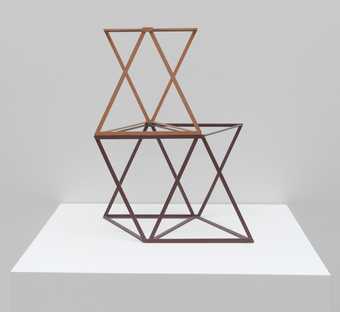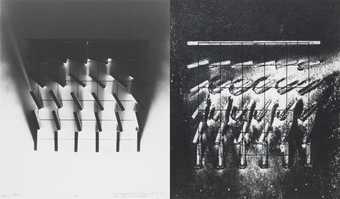
In Tate St Ives
- Artist
- Nalini Malani born 1946
- Medium
- Photograph, digital print on paper
- Dimensions
- Frame: 1150 × 926 × 28 mm
image: 1110 × 885 mm - Collection
- Tate
- Acquisition
- Purchased with funds provided by the South Asia Acquisitions Committee 2017
- Reference
- P82088
Summary
Untitled I is one of three works in Tate’s collection from a series of black and white photograms by the Indian artist Nalini Malani (see also Untitled II [Tate P82089] and Untitled III [Tate P82090]). The three images all date from 1970 and are visually similar in nature: monochromatic geometric studies in light and form. Originally produced as photograms, exposing light-sensitive paper to light without the use of a camera, these works now exist as photographic prints in an edition of ten. Tate’s copies were printed in 2017 and are number four in the edition. The photograms were first exhibited at the Pundole Art Gallery, Bombay in 1970, printed to a similar scale as the later edition.
While Untitled I and Untitled II are progressive studies in asymmetry, with floating shapes in varied hues, Untitled III is a more linear composition. The shapes are playful, reminiscent of paper cut-outs, and the variation of light and shadow and placement within a shifting composition create the illusion of movement and three-dimensional depth, such as is found in a reflection. Malani is known for installations that combine painting and video, often deconstructing familiar iconography through a feminist lens. These early works mark her transition from figurative painting to a more experimental lens and time-based practice. Formally, they are a response to the urban and modernist concerns of the period, responding to local architectural developments and the utopian promise of new social housing within Malani’s native India.
Malani and her peers were given access to camera equipment by fellow artist Akbar Padamsee (born 1928) in 1969. He used fellowship funds awarded by the state to create the New Vision Workshop in Bombay, inviting artists to experiment with new film technologies. Meanwhile in Baroda, Nasreen Mohamedi (1937–1990) and Jyoti Bhatt (born 1934), among others, were making and sharing photographic works, an aspect of their practice then considered private, largely due to a lack of commercial interest in photography as an artistic medium. Malani was aware of the work of Hungarian painter and photographer László Moholy-Nagy (1895–1946), and has stated that she was part of a circle of artists and architects deeply concerned with both modernism in art and the built environment, and with urban modernity and social transformation in India. In her early cinematic experiments, Malani created forms that echo and likely informed the architectural arrangements of these photographs. Shanay Jhaveri has described the cut paper process Malani used to make experimental 16mm films at the New Vision Workshop:
Malani built a model townscape from thick black paper, and under varying slants of light photographed it, from a crane like shot perspective. These photographs were then converted into large negatives from acetate sheets with registration holes. Malani then changed the gray tones into color [sic.] by using color filters, and the acetate sheets were finally shot individually on 16mm.
(Jhaveri 2014, accessed 20 March 2017.)
The Untitled photograms were produced soon after, using paper cut-outs and dodging and burning techniques learnt through experimentation in the darkroom and through conversations with artists such as Mohamedi, whom Malani has acknowledged as an influence. Malani continued to make photographs when she went to Paris on a scholarship in the early 1970s, and her ongoing interest in the negative image and the play of light and shadow is evident in her later large-scale installations such as The Tables Have Turned 2008.
Further reading
Shanay Jhaveri, ‘Building on a Prehistory: Artists’ Film and New Media in India, Part 1’, Lux, 2 May 2014, https://lux.org.uk/writing/building-prehistory-artists-film-new-media-india-part-1, accessed 20 March 2017.
Nalini Malani: You Can’t Keep Acid in a Paper Bag, 1969–2014, exhibition catalogue, Kiran Nadar Museum of Art, New Delhi 2015, pp. 39–95.
Nada Raza
March 2017
Does this text contain inaccurate information or language that you feel we should improve or change? We would like to hear from you.
Explore
- abstraction(8,615)
-
- non-representational(6,161)
-
- geometric(3,072)
- formal qualities(12,454)
-
- blur(210)
- light(150)
- movement(172)
- photogram(11)
- photographic negative(21)
You might like
-
Ceal Floyer Etching (at 45 rpm)
2000 -
Nalini Malani Untitled II
1970/2017 -
Nalini Malani Untitled III
1970/2017 -
Rasheed Araeen Fire!
1975, printed 1984 -
Rasheed Araeen 3Y 3B
1969 -
Rasheed Araeen Rang Baranga
1969 -
Rasheed Araeen Zero to Infinity
1968–2007 -
Rasheed Araeen Drawing for Sculpture
1968 -
Rasheed Araeen Drawing for Sculpture
1966 -
Rasheed Araeen Drawing for Sculpture
1966 -
Rasheed Araeen Drawing for Sculpture
1970 -
Rasheed Araeen Drawing for Sculpture
1965 -
Rasheed Araeen Drawing for Sculpture
1972 -
Rasheed Araeen Lovers
1968 -
Dóra Maurer Sluices 3, A B
1980–1

